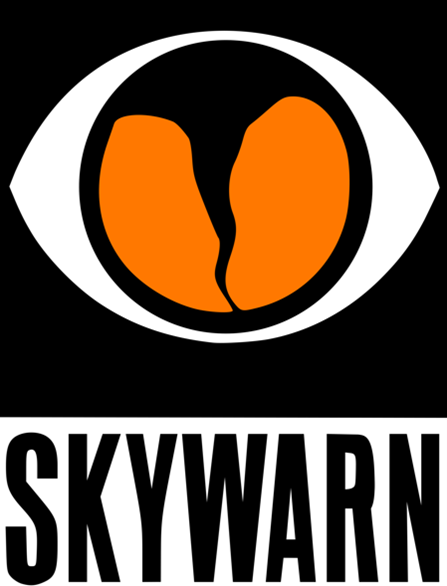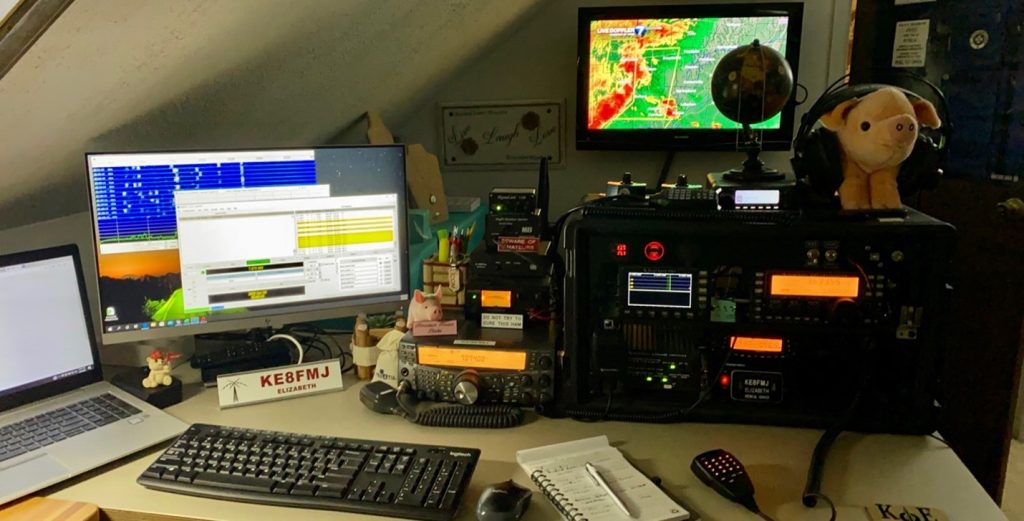I previously wrote an article for OnAllBands on the SKYWARN program: “Getting Involved in the Storm Spotter Program.” You can find that article here.

One does not have to be a ham to participate in the SKYWARN program or its training. The National Weather Service (NWS) encourages anyone with an interest in public service to join the program. Police and fire personnel, dispatchers, EMS workers, public utility workers, and concerned private citizens are all welcome. Individuals affiliated with hospitals, schools, churches, and nursing homes, or those who have a responsibility for protecting others are also encouraged to become a spotter.
So, what roles do hams play in weather watching?
An effective spotter amateur radio net usually follows some form of guide or outline. This is especially helpful during times of severe weather. It is during these difficult conditions that your communications to the NWS have the utmost value.
THE GOALS OF AMATEUR RADIO SKYWARN
- To have a network of spotters in place to report severe weather
- To activate this network if needed
- To coordinate reports from the spotters in a professional manner
- To relay these reports to the NWS in a timely manner
ACTIVATING THE NETWORK
Here are the criteria for activating a network during severe weather conditions. The need for activation occurs when only one of these criteria is met:
- Receive a call from the NWS requesting reports
- NOAA Weather Radio, local TV or radio reports, especially if your county is under a severe thunderstorm/flash flood/or tornado warning
- NWS pages
- Tune to your local repeater where SKYWARN nets are held. Others may have begun to activate the net
- If you are hearing reports on the repeater that meet the criteria set by the NWS
- Request by EMA or other county official
CRITERIA FOR REPORTING
These criteria can be slightly different depending on the local SKYWARN area.
- Tornados
- Funnel clouds
- Rotating thunderstorms
- Wind gusts estimated or measuring 45 MPH and above
- Winds with damage to large tree limbs, roofs, etc.
- Hail larger than pea size
- Flooding of basements, streets, streams, and rivers
- Heavy rain of 0.75 inches or more in under an hour
- Fire or damage caused by lightning
- Any death or injury due to any of the above
Remember the three most important parts of a report:
TIME: Time of occurrence
EVENT: Hail, tornado, funnel cloud, flood, etc.
LOCATION: County and approximate road intersections or landmarks
When a Severe Thunderstorm Watch has been issued but no weather activity is occurring in the area, a STANDBY net may be established. Note the expiration time of the watch.
A net control station will then be established and take check-ins. This is the best time to establish where potential observers are located for the upcoming event, not when severe weather is hitting. The net control station will also relay watch information frequently. Normal use of the repeater can continue; however, leave a pause between transmissions should net control need to break in to take the net to a higher activation level.
As the storms approach the area, the net may need to be fully activated. Often severe storms strike quickly and can be isolated. One person, often net control or a liaison station, should be delegated to relay severe weather reports directly to the NWS. The NWS radio operator can provide information on the current watch/warning status for your county and a brief radar direction synopsis. It is up to the net control operator to determine what level of net activation is required given certain circumstances. Net control or a liaison station will keep operators on the net advised of status information from the NWS.

Questions? Share them in the comments below or email me at KE8FMJ@gmail.com.

